
While working through my backlog of games I am also playing some recent titles as well. I figure it is best to stagger these in the hopes of keeping the blog relevant to current gaming instead of being totally retro.* I played the demo of Spec Ops: The Line some time back, soon after release, and was impressed with the feel of it. In my opinion, this merited a closer look, so here it is.
* Note, not all went as planned here and… yeah this game is now last year’s news and I am way behind again… but you can see my intentions were pure so I will keep this ill-fated line in none the less…
Spec Ops: The Line is a creation of Yager, a German based developer, and published under the venerable 2K Games label. The same publisher that brought us the likes of the BioShock franchise, Sid Meiers Civilisation games and… oh no, Duke Nukem Forever. But let us not dwell on such things. They also published Gearbox‘s Borderlands and Borderlands 2. In all 2k Games are a purveyor of great titles.
I will begin by saying something that is a little unusual in gaming review circles since the usual expectation is to beat up on this genre. I actually like military shooters. I liked the Modern Warfare games and I liked the delivery of their story. Well, to a point anyway. (not a fan of MW2’s airport scene) I do agree that the usual plot of America being the ‘good’ guy/victim and everyone else being the aggressor is a little on-the-nose in most aspects of the story, as well as in other games like it. But there are some subtle grey areas and admission of underhandedness on the ‘good guy’s’ part in many of these games. You have to look really closely for them but they are there. With Spec Ops: The Line, you don’t have to look at all. It is rubbed in your face at every point in the game. I am sure this is not news to any of you if you have read at least one review of the game.
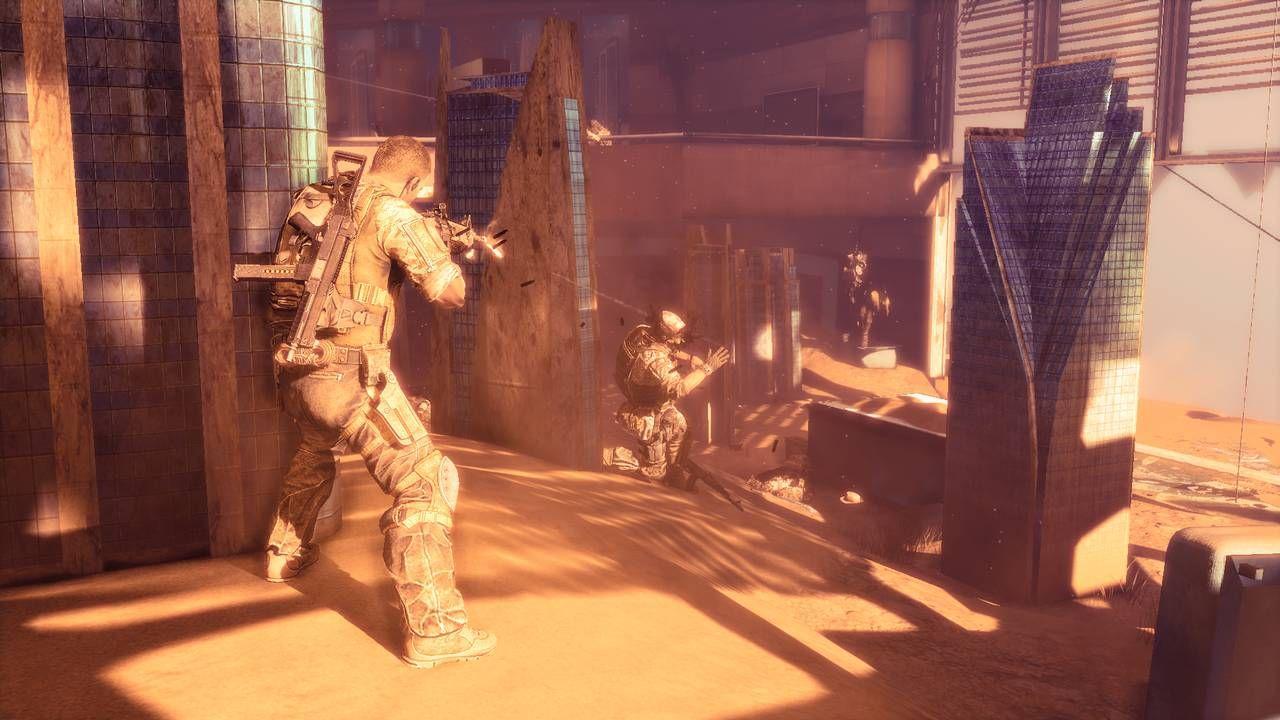
Before going on I will state that I might not be able to avoid spoilers in the story while talking about some of the mechanics at play because they are somewhat intertwined. Though I feel by now enough has been revealed about the story of the game to give you all a rough idea of where it takes you so maybe I don’t have to worry too much. And there is always the final plot twist at the end which I can easily avoid disclosing in my story round-up at the end. For the purpose of introduction, you play the role of Captain Walker of Delta Force, sent into Dubai following a disastrous and epic sand storm that has pummelled the city relentlessly for weeks on end, and is still hovering around the outskirts during the game. Your mission is to locate an American Army battalion, the ‘Damned’ 33rd, returning from a failed mission in Afghanistan before the storms. While stopping over in Dubai they volunteered to stay behind and assist in an evacuation of the city, against the wishes of the UAE government. They never came out and eventually a crackly transmission breaks through the storm wall reporting a total mission failure with ‘too many’ casualties.
As I have said, the story and its delivery through game mechanics are woven together, as there is a moral choice system present. Though it is less overt than I have seen in other games, where you get to click on the little devil or angel on your shoulder to continue, and you consciously know you are making the good or bad choice. In The Line, you might not even know the choices are there let alone if you made a good or bad one since the whole situation is a moral tangle. At some point in the game you are given moments to act when you didn’t realise it and thought you were simply watching the cut scene unfold. In other moments you are prompted to just do something which seems pretty much par for the course, but is it the only option? Can you do something else? Maybe… This is the magic of the game and the story where you realise after a while that you really are put in the shoes of the character, and he only acts (or doesn’t) in a situation because you make a subconscious choice. Looking back at some of my actions where I am given hidden choices and realise I could shoot someone instead of just watching I began to wonder if I should have. Maybe I shot the first time because I thought I was meant to anyway. It is a game, after all. But is this not echoed in real life? You do something because it seems the natural reaction to whatever situation you are in. So, the real question is ‘did I have another choice? Or was I forced to do this by the situation?’ Keep that question in mind for later when I talk about the story a little more, because it does become a theme of the ending of the game when the blindfold finally comes off.
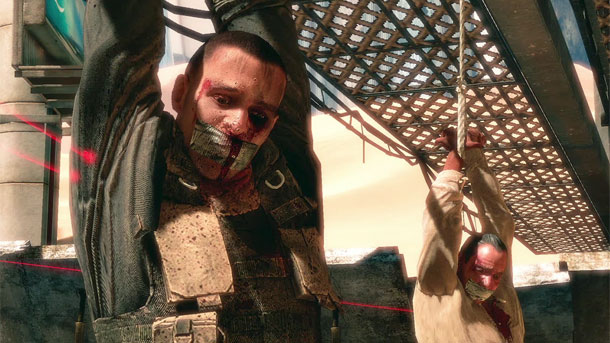
A moral choice must be made… oooooh. Can you count the choices?
However, the moral choices have no major impact on the overall ending, with a couple of exceptions right at the end, and really only change the perspective of events at that time. This is something I like since it also keeps in line with the theme of not being fully in control and driven mostly by events around you. The idea that you and you alone can change the course of events of such a magnitude is hard to swallow anyway, and the changes are somewhat more intrinsic to Captain Walker. Sorry if this sounds a little cryptic but you really have to play it to understand where I am coming from, because saying more would really spoil the plot beyond what I have already said.
On from all this contemplative introspection, what about the game itself? Well, the controls are as you expect in a shooter. It is an over-the-shoulder camera view where cover-based mechanics feature heavily, and you have a pair of AI teammates with you who you can issue contextual orders to. If you are not a fan of cover shooters and like run-and-gun style then you might want to play on easy difficulty since you really do need to use cover with the accuracy of the enemy AI. Though this does remove the challenge anyway. Standard difficulty makes a big leap where enemies are pretty lethal if you spend more then a second in the open. However I was happy to see a shooter where you are their sole focus of fire, unlike Modern Warfare like games where you are one in a war. At least you know every enemy is going to zero in on you, and nothing is left to doubt. And you have a couple of options to flank the enemy while the other teammates hold position and draw most of the fire. And where you cannot, you can issue a couple of orders to have the AI buddies target a hard-to-kill enemy or heavy gun placement. As I said, this is contextual and depending on things like the type of enemy and distance the game makes a choice of which team member the order is issued to. This is a little limiting since you can only have one target marked at a time anyway, and only one button issues the order for a kill. If the target is on a ledge, or far away, the sniper takes the shot but it takes him a moment to get his aim. He might even need to move somewhere for a good shot. If the enemy is just medium to close range then the heavy machine gunner opens up. Or a machine gun nest will see him lobbing a grenade at them to clear it. Sometimes a better option than you hogging all the glory yourself since a couple of well-placed hits is all it takes to drop you on the floor.
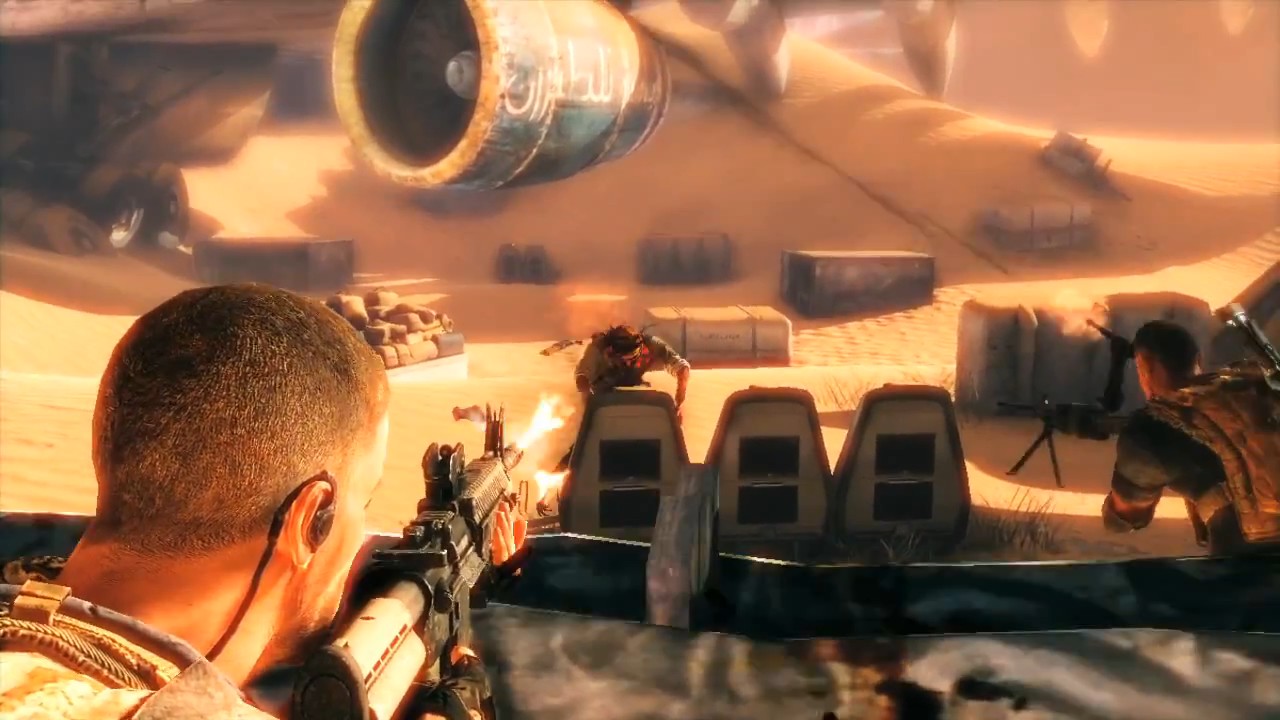
The scenery is somewhat dynamic where certain surfaces can be damaged and some forms of cover get blasted away while you try to hide, but this does not feature much in the game overall. The set pieces are nicely varied, as well, taking you from rooftops of buildings connected by dunes of sand, or zip lines, to tight hallways and rooms inside the buildings. Some areas are fairly open and enemies can come from any side, meaning you should not focus only on firing directly ahead. One of my favourite moments was when you split off from your teammates in a shopping mall, separated by the central atrium as you move along providing covering fire from your vantage point and clearing the road ahead. Occasionally you can use lines suspended between buildings or across huge gaps in the ruined buildings to move along. If you have not guessed by now the game path is strictly linear from start to finish. Maybe it is needed for the story to unfold properly so I can forgive it but I was thinking, as I played through the first time, that it might have benefited from a more non-linear approach to doing your missions, if only to enhance the delivery of the story itself. Something I found worked in favour on a game like Deus Ex: Human Revolution. (Another game on my must blog about list.) However I found it did not do other games any favours, as I echo in my review of Halo: ODST. So don’t take too much stock in my own biased ramblings there, as I could be wrong. Still, one thing I would have liked while playing through the second time, is a little randomness in the enemy deployments. Given the potential for multiple attack points, it would have been nice to have to deal with different formations a second time through.
When you do shoot people, the animations are very nicely done. Overall, gunplay feels satisfying and well-controlled. The guns have enough accuracy to make the game fun, while enough inaccuracy to make the game a challenge. Movement controls are precise enough, with one critique regarding control assignments. The button for sprint is the same as the button for taking cover, which is nice making for seamless movement from cover to cover. However, getting out of it again sends you sprinting sometimes, which I found annoying because it was not very consistent. Maybe it is more a symptom of the sprint button being a toggle rather than a hold button. Tap it and you sprint until you either stop moving or tap run again. Not a very intuitive mechanic in all. Overall I question the need for sprint to be a toggle since you are not going to be sprinting anywhere for a prolonged period of time in this game, so I fail to see the benefits. It is not like the auto-run button in the Fallout games where running long distances is part and parcel of getting around. In a game like Spec Ops, with cover to cover advances, it just confounds things.
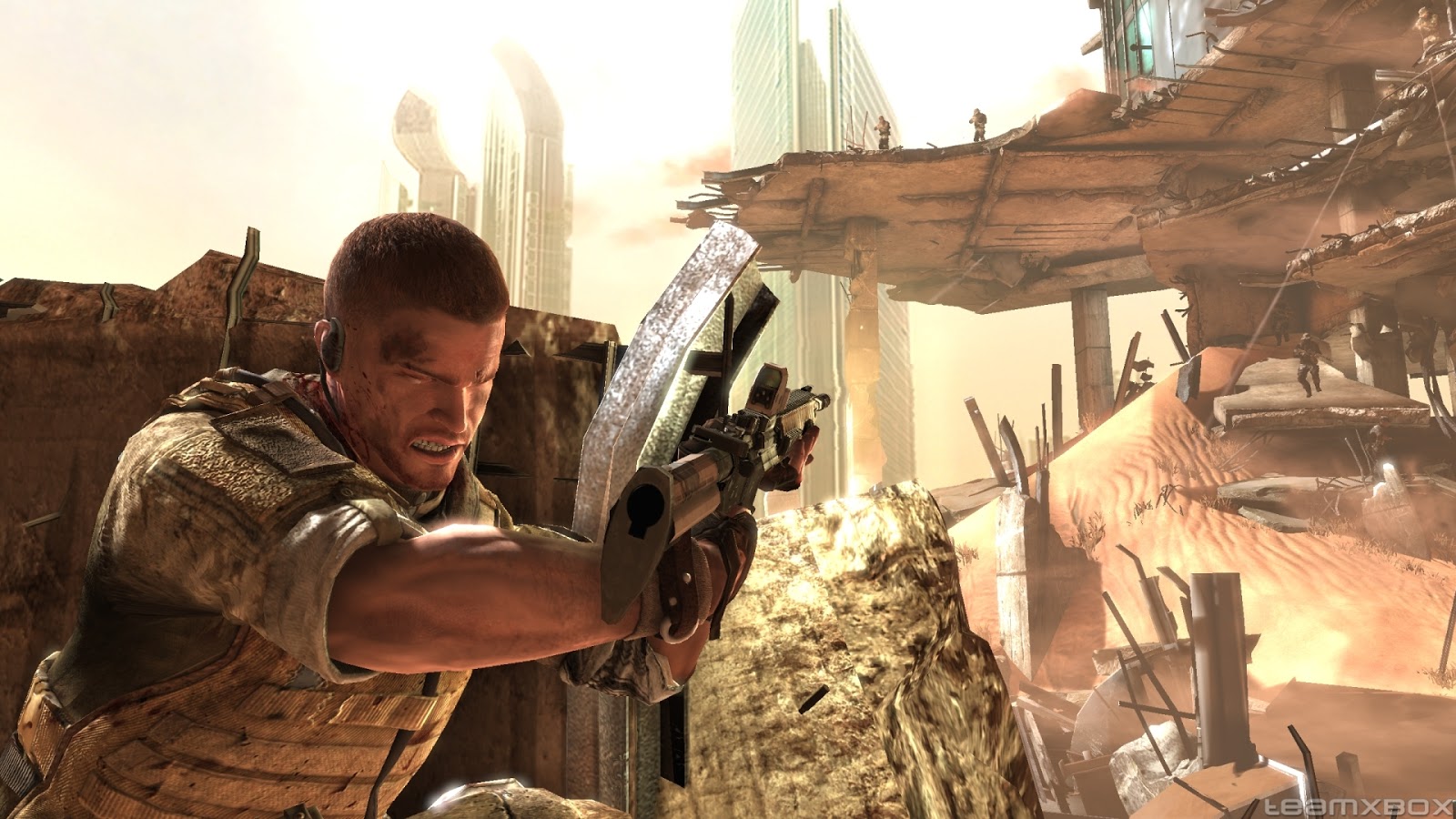
Shooting round corners tends to take the edge off it, I feel.
As with all cover-based mechanics, there is the ever-present vault system where you launch over cover instead of going around it. A nice feature is, if your cover is being approached by an enemy charging you or they are already in cover on the other side of the sandbags, you can vault over and melee them in one contextual button press. You can also shoot blind around cover with decreased accuracy, Gears of War style. Other fighting mechanics involve taking control of the fixed heavy gun placements, which you can operate while crouched down at the expense of accuracy, and execution moves on injured enemies. Guns have secondary features, depending on what gun you are using. The AK-47 switches from burst to full auto fire. The M4 attaches or removes a silencer, as does the M9 pistol. The SCAR has a grenade launcher option. The P90 swaps the UI cross-hair for a laser sight, but I could not see much of a change in the weapon performance beyond that.
You can use some of the scenery to your advantage in certain places, like shooting out glass windows where sand is piled up behind, dumping it on enemy groups. They sometimes stand on glass roofs above you letting you shoot out the glass beneath them. There is an obligatory rail-shooter section, where you wreck everything in sight with a mini-gun mounted on a Blackhawk helicopter. Occasionally the firefights can be broken up by a sandstorm moving in, stopping you issuing orders to the team and also making it hard for you to see the enemy and them to see you. This is one of the reasons I wish the game had taken a more free-form approach as you move around the city to different objectives. The sandstorms would have been more of an issue if they were random and unpredictable as you play through, and given the game a much more dynamic feel. Prequel DLC, maybe? Finally there is the ever-present birds-eye view fire control system thrown in, where you designate targets on a laptop and rain down death using a mortar launcher you take over. So it is like controlling the UCAVs in the MW games or Homefront.
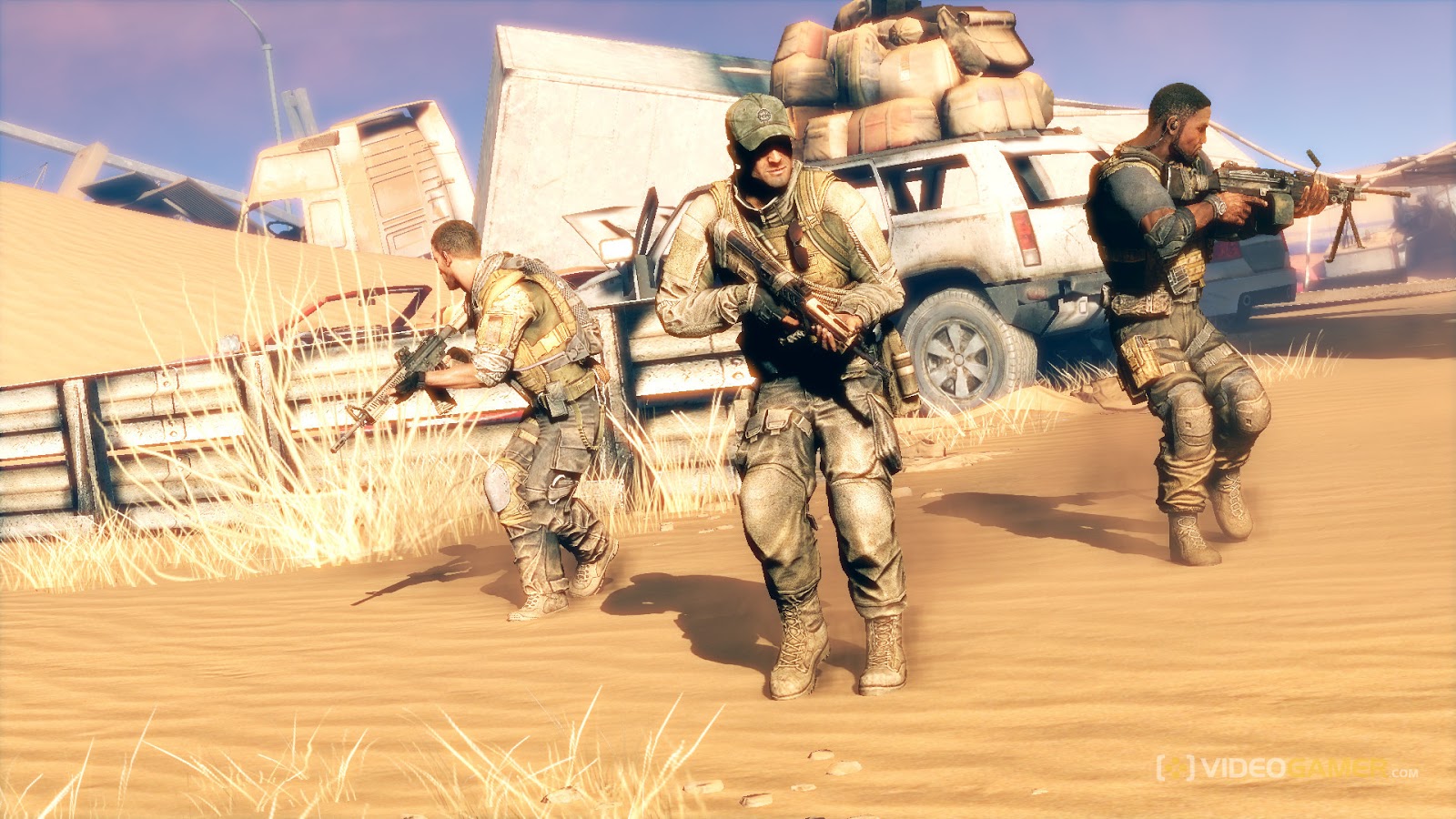
The controls handle well with mouse and keyboard, apart from the earlier mentioned sprint from cover issue. I have also finally invested in a gamepad for the PC and will be able to give that perspective as well. So, it plays well with a controller too. The aim speeds can be increased and they move well, compared to most shooters. Which is why a lot of my blogs about shooty-bang-bang games are on the PC. The control maps as they stand are reasonable, and feel intuitive. The aiming overall, across both keyboard-mouse and control pads, feels accurate and smooth. The movement speed of your character is well-paced to the action, too, balancing that peril factor of moving to new cover without it being an obvious death sentence. The only gripe I have is getting on a zip line. You have to jump and then press the key to interact with it and I find the pick-up of this to be pretty slow. Thankfully the zip lines never feature much in combat, and only between fights. Also the movement speeds of the fixed turret on the rail-shooter sections suffer with a control pad compared to the mouse control.
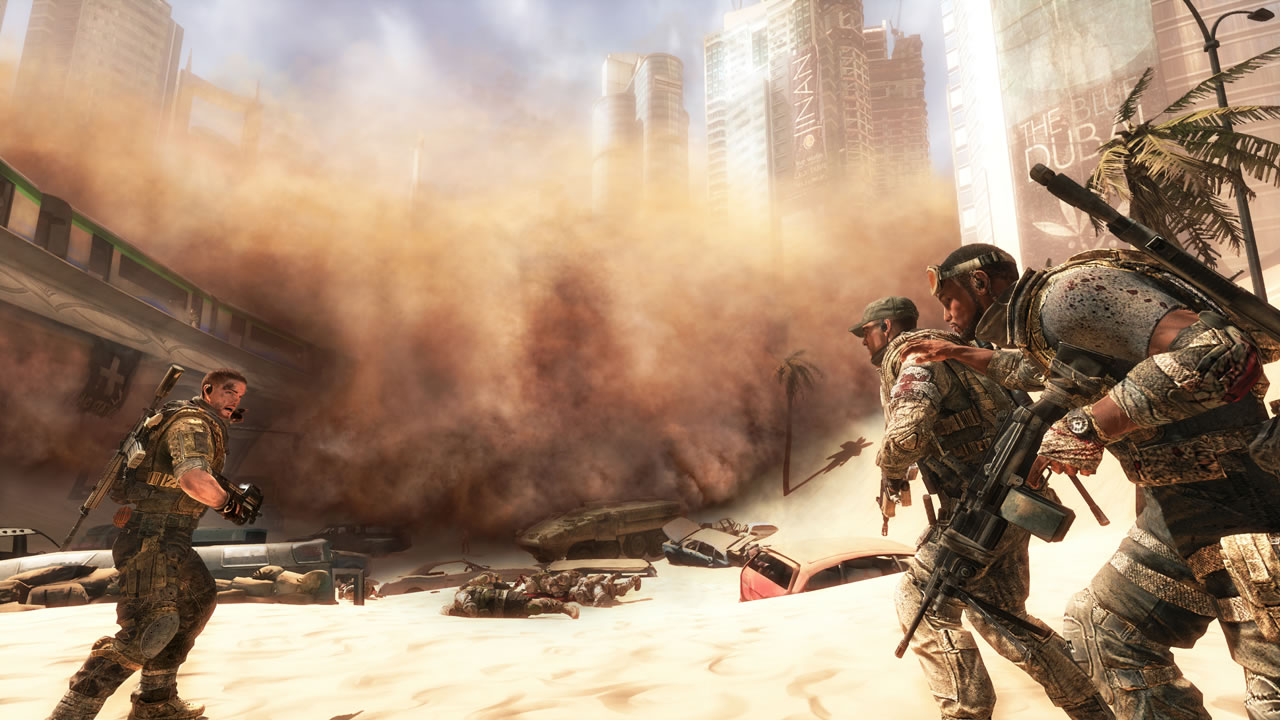
scripted events only, sadly.
Besides this the game plays solidly and feels good. Environmental effects and gun-play are all satisfying. Not just to the eye, either, as they feel real and detailed. When the first sandstorm rolled in the characters change their animations to shield their eyes and walk slower while hunched over lending to better realism. Even when hanging on to the side of a collapsing ledge you felt a little desperation as enemies began closing in around you. And to my joy I realised I could still shoot one-handed in a never-say-die style.
There is not really a lot of variation in the set, though, as the prevailing theme is sand. Though a few locations do differ to the outdoors and overall their layouts are all varied enough to provide a different combat flow as you move through the game. The enemies are also pretty standard fare, sticking to a more real military feel with soldiers with guns, insurgents with guns and more soldiers with different guns. There are no varied classes of enemy you can expect from other games, like a crazy guy with knife, grenade freak or whatever. Well, ok there is one. A heavy armoured juggernaut with an M60 machine gun… ok then I guess it has classes of enemy after all. Dangit…

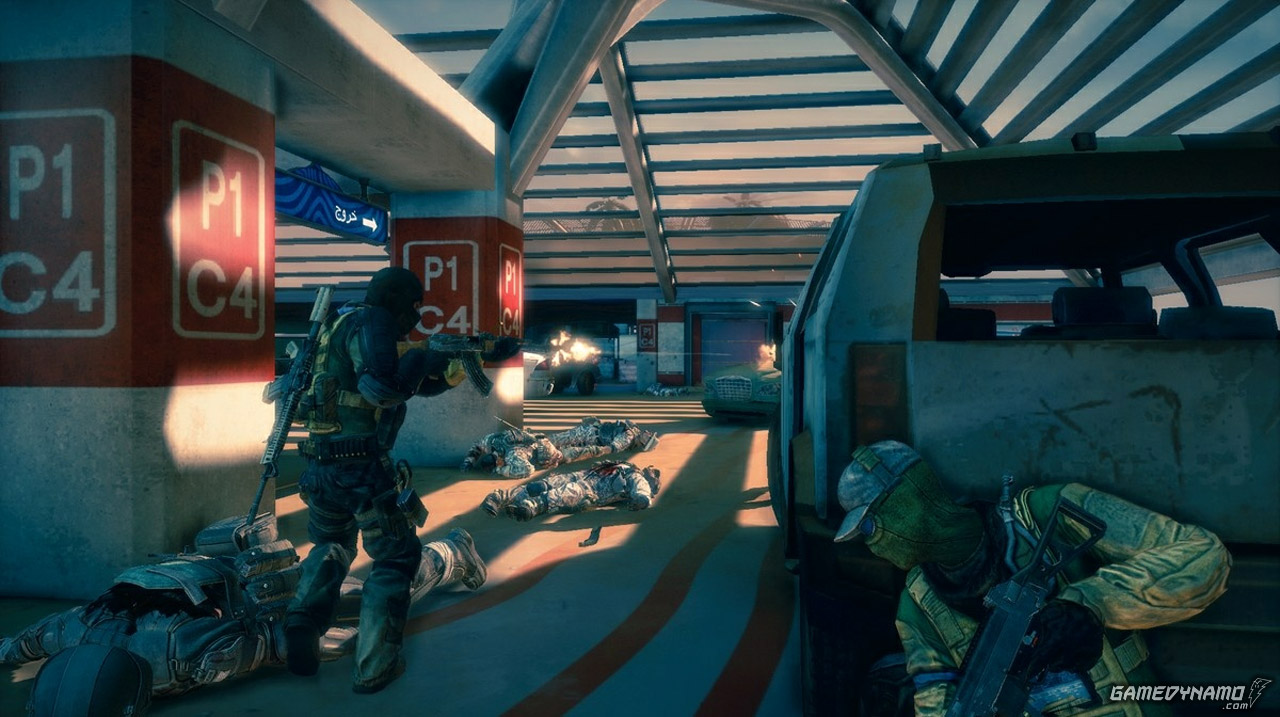
It gets everywhere. And I do mean… everywhere!
So how does all this tie together in a story? As said above, Dubai has been smothered in a mega sandstorm, and a US military battalion has defied orders and the wishes of the UAE and stayed behind to assist in evacuations. Clearly they did not make it out and several weeks later the storm finally recedes enough for a delta force team to go in and investigate a barely discernible distress message. Note I did not say the storm ended, it simply moved on a little and exposed a little of the city, giving the main character, Captain Walker, a way in. At this point the assumptions are many about the fate of the city and the battalion that stayed behind. Were they consumed in the storm, unable to find shelter? Were they attacked? Who knows…
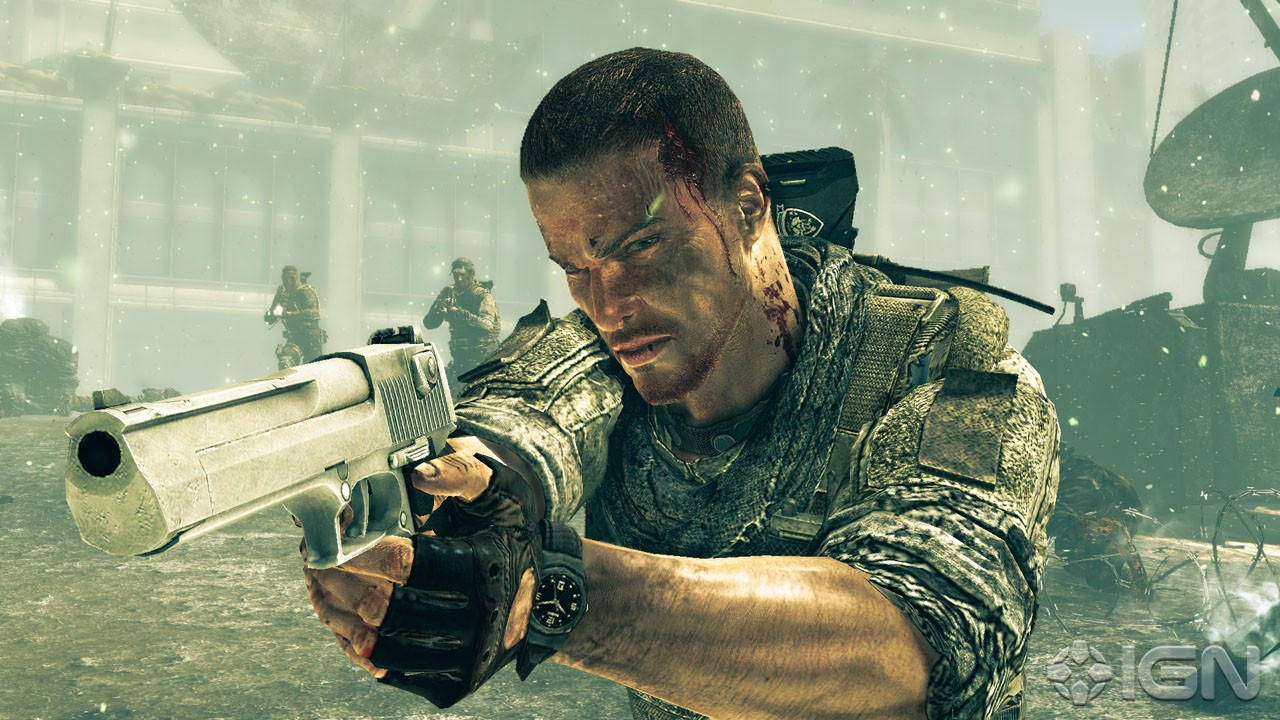
They all look alike.
And assumption is pretty much the hallmark of the story as you are led around by the nose in a very organic feeling way. It is not all that hard to avoid spoiling the ending at this point since the game sets the tone pretty quickly. The following is simply the first half-hour of the game anyway so I am not spoiling much when I say that you are attacked by locals waiting in ambush at a small outpost on the highway out of the city. The area is chocked with cars covered in sand, and dead bodies shrivelled by hot sand and decomposition litter the area. The outpost is clearly US military, and seemingly the origin of the distress call. And the dead soldiers were clearly not killed by a sandstorm, as bullet holes pepper the scene. So yeah, it all looks like local terrorists have attacked the military in the usual ‘we hate America’ way of Modern Warfare like games. Assumptions. You track them to a nearby building where you hope to save a soldier who was taken in a firefight near the outpost, only to see him being interrogated by an American with a CIA ID badge. What? Anyway you save him only to have him pull a gun on you. OK he is shocked and confused and says he is going to get his commanding officer who is among soldiers who are now storming the insurgent camp below anyway. And then the soldiers return and begin shooting at you as well, directed by the solider you saved, if you chose not to shoot him that is. Remember those choices you may not know you have? And from then on it seems like more and more you see the US forces being the bullies, rounding up civilians, shooting them if they resist and so on.
Assumption… yes you can make them all you want but the fact remains that Captain Walker is forced into a fight with his own military who seems to have gone off the deep end, including their commander, Lt. Colonel Konrad. Some way into the game you have infrequent radio contact with him and he seems to have lost most of his marbles. As I said above, the ‘Damned 33rd’ have returned from a disastrous mission in Afghanistan, and the failure was taken pretty hard by Konrad. Something that the varied collectible items in the game echo in the form of psychiatric evaluation snippets painting him as a classic PSTD with an emerging messiah complex coupled with feelings of inadequacy. And to add to the lunacy, there is a DJ in one of the towers broadcasting a ‘good morning Vietnam’ style show, though laced with much more propaganda and pro-33rd viewpoints in which the insurgents are addressed directly to knock off their shit.
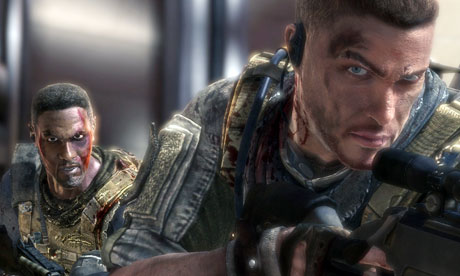
Overall you spend the rest of the game trying to get to Konrad and bring him down, feeling the deep disgrace they have brought on the service. Though the fun does not stop there, as the team begins to break down under the pressure. It is all very believable as their steady camaraderie slowly crumbles with disagreements and mistrust over their newly adopted mission and the moral conflict of having to gun down their own fellow soldiers. This finally descends into loathing and infighting near the end as the team continues on despite having been exposed to a glimmer of truth showing them that the situation may not be what they have assumed all along. And no I will not expand on this because that would spoil way too much. At this point I do recommend this game as a full-price purchase because it is very much worth it. Even if you are not a fan of the overly patriotic shooter franchise in which you just blindly charge around gunning down people who are not American, be aware that this game is not among those. You will be rewarded with a richer and deeper story.
I did say in the end the blindfold comes off and much of what has happened is shown in a very different light. Well, more a different reality than a different light. Again I cannot spoil this because it is a triumph of storytelling that must be experienced first hand by the player. This does leave me with one more task where I reflect on the name of the game. ‘The Line’. Hold the line? Like a battle line? How about a moral line? Sure, that works. ‘I get it now’ I say to myself, smug and satisfied at my power of observation. ‘I see what you did there Yager, very clev…. oh…’. I did not really have it all figured out after all, as I saw another line that had been crossed without realising it. A line of sanity in which a startling truth of everything that has happened until now becomes apparent and leaves you questioning if you really had choices or if events chose your actions for you.
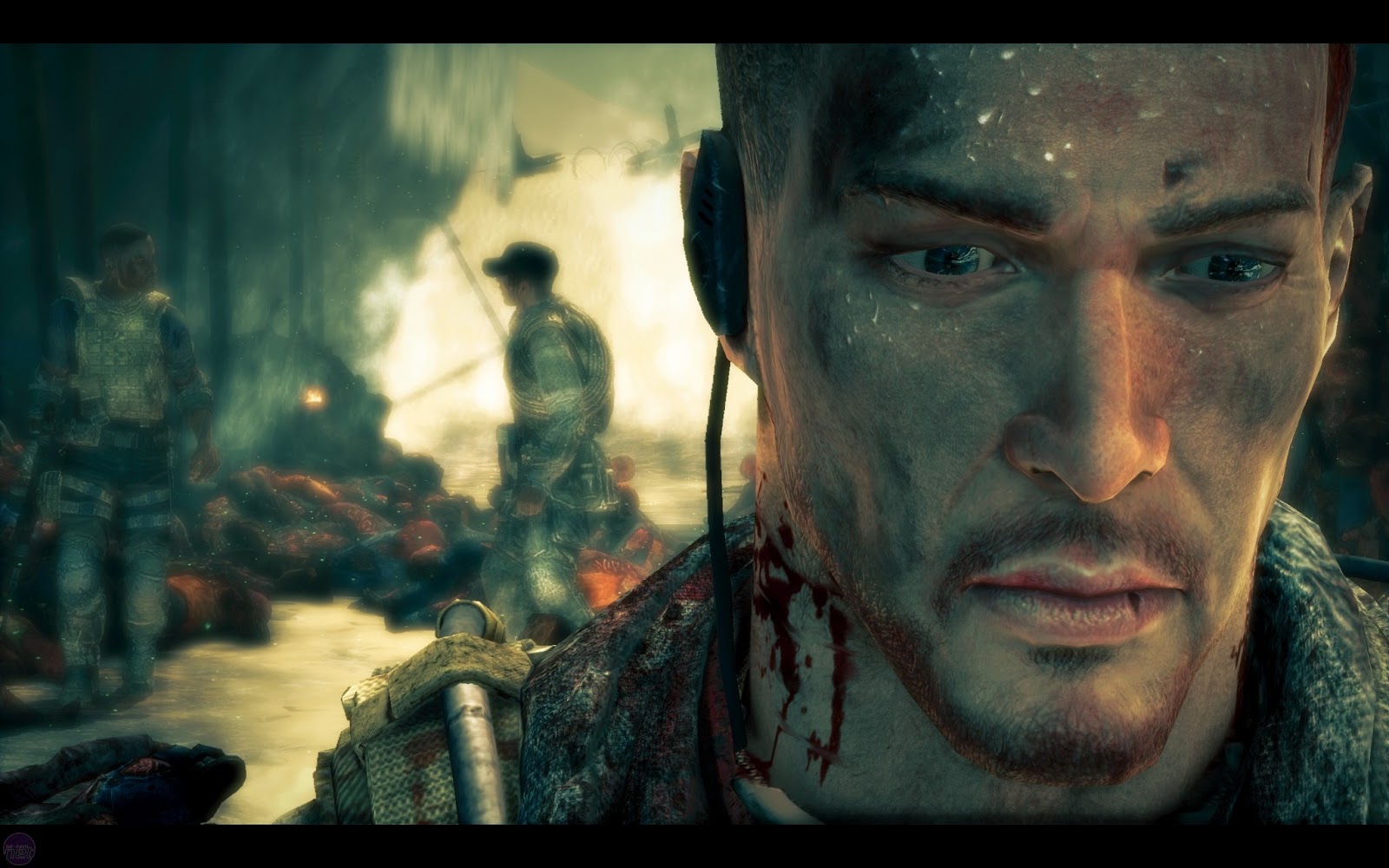
have done something wrong. Just saying…
I’m sorry I cannot be more clear about this but keep this in mind when you reach the ending. You will know what I mean. As I said I do recommend the game as maybe one of the best games of 2012. It does not really revolutionise anything mechanic wise, it simply takes what we already have a good amount of and tells a great story with it.
nice review mate. keep it coming…